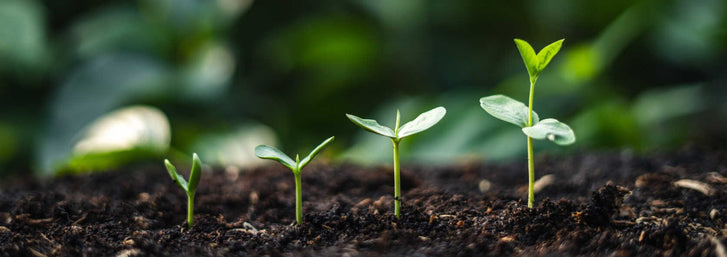
Kat Jones

Ann Wigmore, wheatgrass pioneer, spoke many times about the life force in the sprouted grasses, nuts, and seeds. Her contemporary, Edward Howell, who studied the life force (enzymes) in foods for over 66 years, spoke of the cook stove as being the chief enemy of modern man (Enzyme Nutrition by Edward Howell). People from all over the world came to Ann’s institute in Boston to learn the correct way to eat to regain their health-- eating and learning to grow and prepare a living food diet. Her diet consisted of wheatgrass juice, all kinds of greens such as sunflower and buckwheat greens, and sprouts of all kinds.

The question is: Does the life force in living plants transfer to the life force of the human body? Many people who drink wheatgrass juice on a daily basis can testify that this life force does in effect transfer. They don’t have to look at pictures to know. They know because they feel great, better than they have felt in years after a few days on wheatgrass juice.
So adding wheatgrass, or barley, or all kinds of sprouts to the diet, can not only heal the body as shown by Ann Wigmore, but it can also add that life force or energy that you can see by the kirlian photographs shown above.
Semyon Kirlian, in 1939, accidentally discovered that if an object on a photographic plate is connected to a source of high voltage, small corona discharges (created by the strong electric field at the edges of the object) it created an image on the photographic plate.
From the year 1939, Kirlian began to study and develop a method and technique called electrography, or electrophotography also called corona discharge photography. Kirlian's work, from 1939 onward, involved the independent discovery of this phenomenon called "corona discharge photography". His technique eventually began to be called Kirlian contact photography. This involved the subject being in direct contact with a film placed upon a metal plate charged with high voltage, or high frequency electricity.
This technique was later studied by Georg Christoph Lichtenberg and Nikola Tesla. Various other individuals explored the effect in the later 19th and early 20th centuries.
Kirlian claimed that the image he was studying might be compared with the human aura or energy field. His experiments showed as evidence energy fields generated by living things such as a picked leaf at set periods, its gradual withering being said to correspond with a decline in the strength of the aura or the life force. In some experiments, if a section of a leaf was torn away after the first photograph, a faint image of the missing section would remain when a second photograph was taken. We have been fortunate in obtaining two pictures of a living organic lentil sprout compared to a cooked (dead) lentil. If in fact the life force does transfer from the sprout to a living being, we will want to obtain the food that has the most life force. (information on Kirlian Photography obtained from Wikipedia)
Leave a comment
Your email address will not be published. Required fields are marked *
0 Comments
No Comments yet! Be the first to start a conversation
Further Reading

Reviewing the Aquatree Garden: A True Leaf Market Experience
The AquaTree Garden is an innovative growing experience! This nifty appliance allows you to grow leafy greens, microgreens, herbs, large sprouts, and vegetable starts (like tomatoes) all at once! When it comes to indoor gardening, there is no question ...

Ashleigh Smith
2024-04-225 min read0
Parasitoid Wasps: A Beneficial Insect in the Garden
Written By Lara Wadsworth There are estimated to be around one million different species of parasitic wasps worldwide. In fact, most wasps are parasitic, which means they live on or in a host at the host's expense. For common garden pests like aphids, ...

Ashleigh Smith
2024-04-226 min read0
Succession Planting: The Key to a Continual Harvest
Do you find yourself harvesting large amounts of any given vegetable from your garden all at once? There is a solution! The practice of succession planting, or planting in segments over a period of time, allows you to harvest root vegetables, leafy gre...

Ashleigh Smith
2024-04-223 min read0
10 Natives of the Southwest USA for Pest Control
Written By Lara Wadsworth The Southwestern United States is a region incredibly unique to the rest of the country. The hot, dry weather can be challenging for plants and animals to thrive without additional help. That is why gardening with natives can ...

Ashleigh Smith
2024-04-157 min read0



